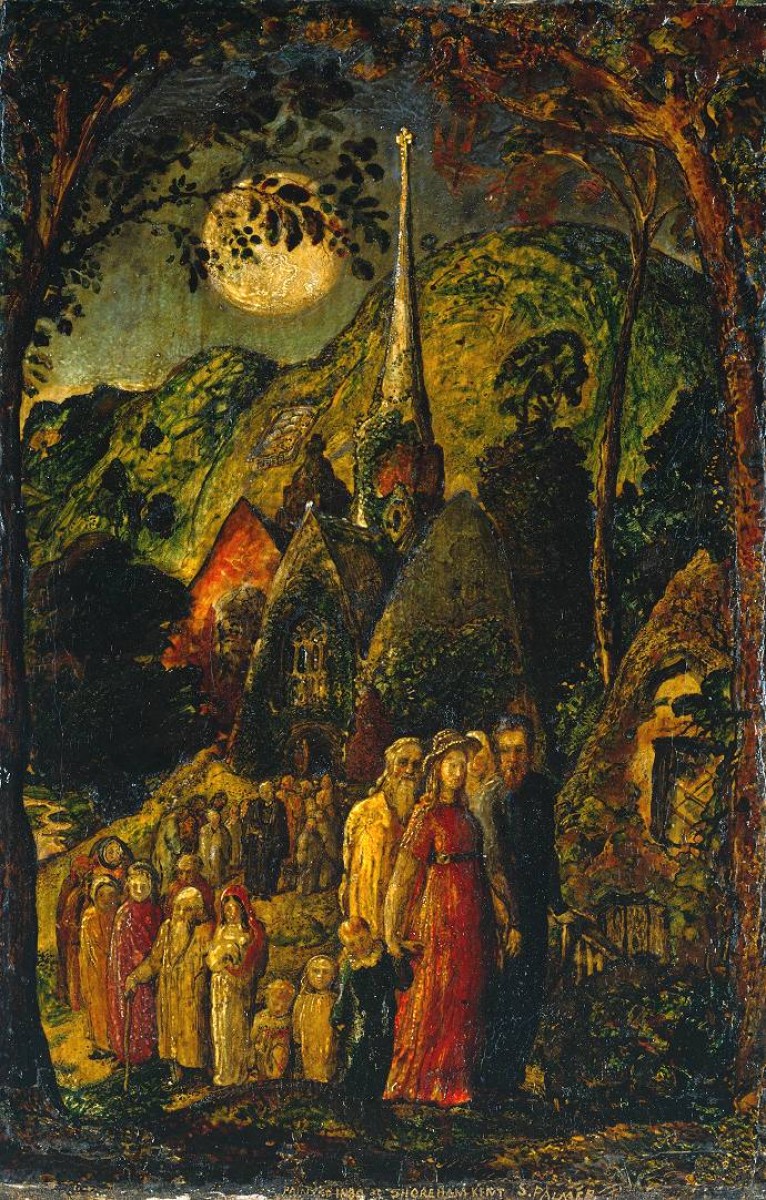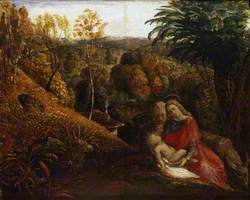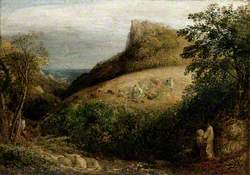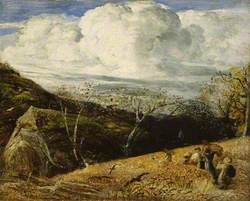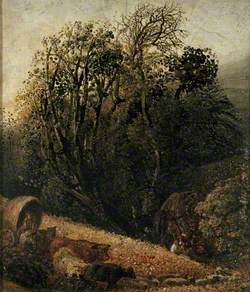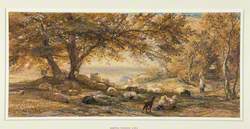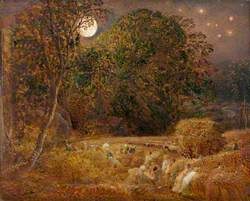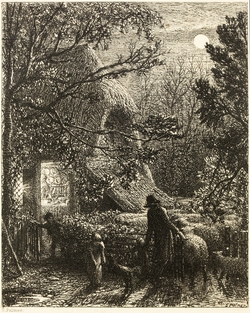How you can use this image
This image is available to be shared and re-used under the terms of the Creative Commons Attribution-NonCommercial-NoDerivatives licence (CC BY-NC-ND).
You can reproduce this image for non-commercial purposes and you are not able to change or modify it in any way.
Wherever you reproduce the image you must attribute the original creators (acknowledge the original artist(s) and the person/organisation that took the photograph of the work) and any other rights holders.
Review our guidance pages which explain how you can reuse images, how to credit an image and how to find more images in the public domain or with a Creative Commons licence available.
DownloadNotes
Add or edit a note on this artwork that only you can see. You can find notes again by going to the ‘Notes’ section of your account.
This is one of Palmer's best-known works, painted while he was living in Shoreham in Kent. Palmer lived in Shoreham for about seven years. To him it represented a kind of rural paradise, an ideal landscape, touched by a divine presence. He called the Darent Valley the 'Valley of Vision'. Palmer's pictures of this period are intensely personal, and often have a mystical, even visionary quality comparable to the work of William Blake. Palmer was greatly inspired by Blake's illustrations to Ambrose Philips's imitation of Virgil's 'First Eclogue' (1821) and could have been describing his own work when he wrote of the Blake engravings: 'They are visions of little dells, and nooks, and corners of Paradise; models of the exquisitist pitch of intense poetry …There is in all such a mystic and dreamy glimmer as penetrates and kindles the inmost soul' (A. H. Palmer, 'The Life and Letters of Samuel Palmer', 1892, pp.15–16).
In his 1824 sketchbook Palmer wrote a poem, 'Twilight Time', which appears to express some of the sentiments in this picture: 'And now the trembling light Glimmers behind the little hills, and corn, Lingring as loth to part: yet part thou must And though than open day far pleasing more (Ere yet the fields, and pearled cups of flowers Twinkle in the parting light;) Thee night shall hide, sweet visionary gleam That softly lookest through the rising dew: Till all like silver bright; The Faithful Witness, pure, & white, Shall look o'er yonder grassy hill, At this village, safe, and still.'
Further reading: Raymond Lister, 'Catalogue Raisonné of the Works of Samuel Palmer', Cambridge 1988, p.77, reproduced p.77. Raymond Lister, 'Samuel Palmer: his Life and Art', Cambridge 1987, pp.40–42, reproduced p.41. James Sellars, 'Samuel Palmer', London 1974, pp.77–78, reproduced p.78. Frances Fowle December 2000
Title
Coming from Evening Church
Date
1830
Medium
Mixed media on gesso on paper
Measurements
H 30.2 x W 20 cm
Accession number
N03697
Acquisition method
Purchased 1922
Work type
Mixed media & collage
Inscription description
date inscribed
